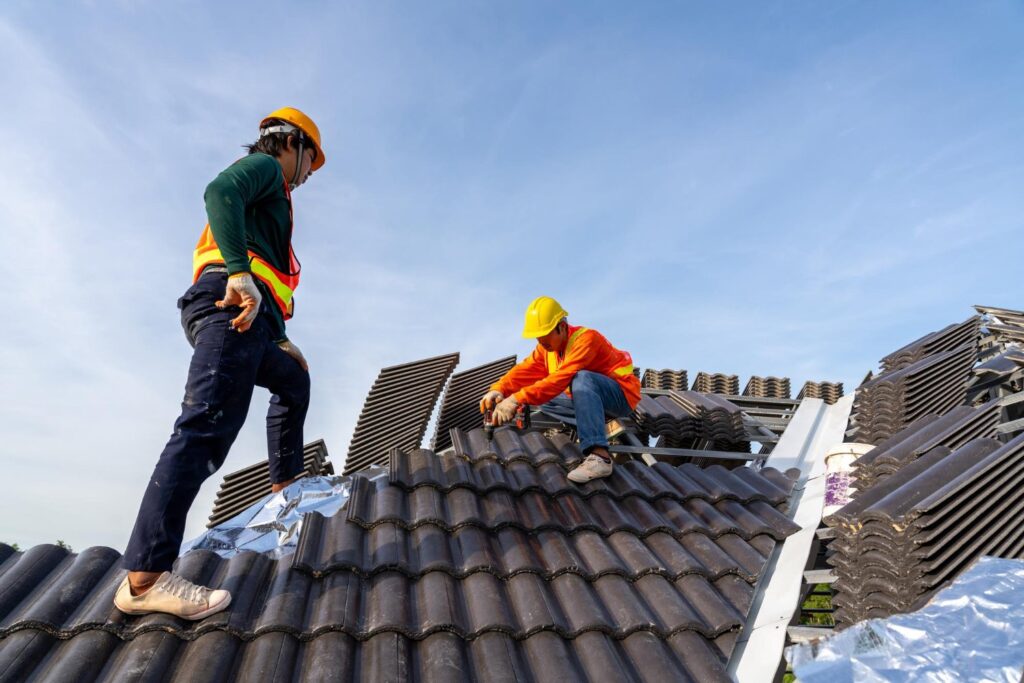
The roofing industry is undergoing a transformation as sustainability becomes a priority for homeowners and businesses alike. Eco-friendly roof installation practices are not only a trend but a necessity for reducing environmental impact and improving energy efficiency. By understanding the principles of sustainable roofing, property owners can make informed choices that benefit their buildings and the planet.
Why Eco-Friendly Roofing Matters
Roofing materials and practices have a significant environmental footprint. Traditional roofing systems often involve energy-intensive production processes, non-recyclable materials, and high waste levels. Embracing eco-friendly alternatives addresses these concerns while providing several additional benefits:
- Energy Efficiency: Sustainable roofing materials and designs help reduce energy consumption by maintaining indoor temperatures more effectively.
- Waste Reduction: Eco-friendly roofing systems use recyclable or biodegradable materials, minimizing landfill contributions.
- Long-Term Savings: Although the initial cost may be higher, sustainable roofs often require less maintenance and last longer, saving money over time.
- Environmental Stewardship: Installing an eco-friendly roof reflects a commitment to sustainability, aligning with global efforts to combat climate change.
Features of Eco-Friendly Roof Installation
Sustainable roofing involves various strategies and materials that prioritize environmental health and energy efficiency. Key features include:
1. Cool Roofing
Cool roofs are designed to reflect more sunlight and absorb less heat compared to traditional roofing materials. They often use light-colored or reflective materials that reduce the heat island effect in urban areas. Benefits include:
- Lower cooling costs
- Improved indoor comfort during summer
- Extended lifespan of the roof due to reduced thermal stress
2. Recycled Materials
Eco-friendly roofs often incorporate recycled materials such as reclaimed metal, rubber, or plastic. These materials reduce the demand for virgin resources and help divert waste from landfills.
3. Green Roofing Systems
Green roofs, or living roofs, involve covering a building’s roof with vegetation. These systems provide insulation, reduce stormwater runoff, and create habitats for local wildlife. They also enhance the aesthetic appeal of a building, particularly in urban settings.
4. Solar Panels and Integration
Combining roofing systems with solar panels is a highly effective way to promote sustainability. Solar-integrated roofing generates renewable energy, reducing reliance on non-renewable energy sources and lowering utility bills.
5. Durable and Long-Lasting Materials
Choosing materials like metal or clay tiles ensures longevity, reducing the frequency of replacements and the associated waste. Durable roofs also require less maintenance, further contributing to sustainability.
Pinnacle Roofing Group’s Approach to Eco-Friendly Practices
As a forward-thinking roofing company, Pinnacle Roofing Group recognizes the importance of integrating sustainable practices into every project. By offering eco-friendly options tailored to the unique needs of each property, the team helps clients achieve both environmental and financial goals. Pinnacle Roofing emphasizes the use of high-quality materials and innovative techniques to deliver lasting results.
Choosing the Right Eco-Friendly Roofing Material
When selecting a sustainable roofing solution, it’s essential to consider factors such as climate, budget, and building design. Here are some popular options:
1. Metal Roofing
Metal roofs are highly durable, recyclable, and energy-efficient. They reflect heat, reducing cooling costs, and can be installed with integrated solar panels for added sustainability.
2. Clay and Concrete Tiles
These materials are long-lasting, recyclable, and energy-efficient. Their thermal properties make them ideal for hot climates, as they help regulate indoor temperatures.
3. Recycled Shingles
Made from post-consumer materials like rubber or plastic, recycled shingles offer the appearance of traditional shingles with added environmental benefits. They’re durable, affordable, and reduce waste.
4. Green Roof Systems
For property owners seeking maximum sustainability, green roofs are an excellent choice. They provide insulation, absorb rainwater, and contribute to improved air quality.
Steps for an Eco-Friendly Roof Installation
Installing a sustainable roof involves careful planning and execution. Here’s a step-by-step guide to ensure a successful project:
1. Assessment and Planning
Begin by evaluating the property’s specific needs, including climate, building structure, and energy goals. Consult with a professional roofing company to determine the best eco-friendly solution.
2. Material Selection
Choose materials that align with sustainability goals, balancing durability, cost, and environmental impact. Consider factors like recyclability, energy efficiency, and compatibility with solar systems if applicable.
3. Professional Installation
Work with experienced professionals to ensure proper installation. Eco-friendly roofs require specialized techniques to maximize their benefits and longevity.
4. Maintenance and Monitoring
Regular maintenance is essential to sustain the roof’s performance. Clean gutters, inspect for damage, and address issues promptly to prolong the roof’s lifespan.
Benefits of Investing in Sustainable Roofing
Beyond the environmental advantages, eco-friendly roofing systems offer numerous practical benefits for property owners:
1. Reduced Energy Costs
Energy-efficient roofs minimize heating and cooling expenses, leading to significant savings over time.
2. Enhanced Property Value
Homes and businesses with sustainable features are highly attractive to buyers, increasing resale value.
3. Compliance with Green Building Standards
Installing an eco-friendly roof helps meet LEED (Leadership in Energy and Environmental Design) certification requirements, boosting a property’s environmental credentials.
4. Improved Comfort
Sustainable roofs enhance indoor comfort by maintaining consistent temperatures and reducing noise pollution.
5. Positive Environmental Impact
By reducing resource consumption, energy use, and waste, eco-friendly roofing systems contribute to a healthier planet.
The Future of Sustainable Roofing
The demand for eco-friendly roofing solutions is expected to grow as more property owners recognize the value of sustainability. Advances in technology and materials will continue to drive innovation, making sustainable roofs more accessible and affordable. Roofing companies like Pinnacle Roofing Group play a crucial role in leading this transition, helping clients adopt greener practices without compromising quality or performance.
Conclusion
Eco-friendly roof installation is more than a trend; it’s a commitment to sustainability and long-term value. By choosing environmentally responsible materials and practices, property owners can reduce their environmental footprint, lower energy costs, and enhance the appeal of their buildings. Pinnacle Roofing Group is dedicated to providing eco-friendly roofing solutions that align with modern sustainability goals. Embracing sustainable roofing practices today ensures a better tomorrow for future generations.





